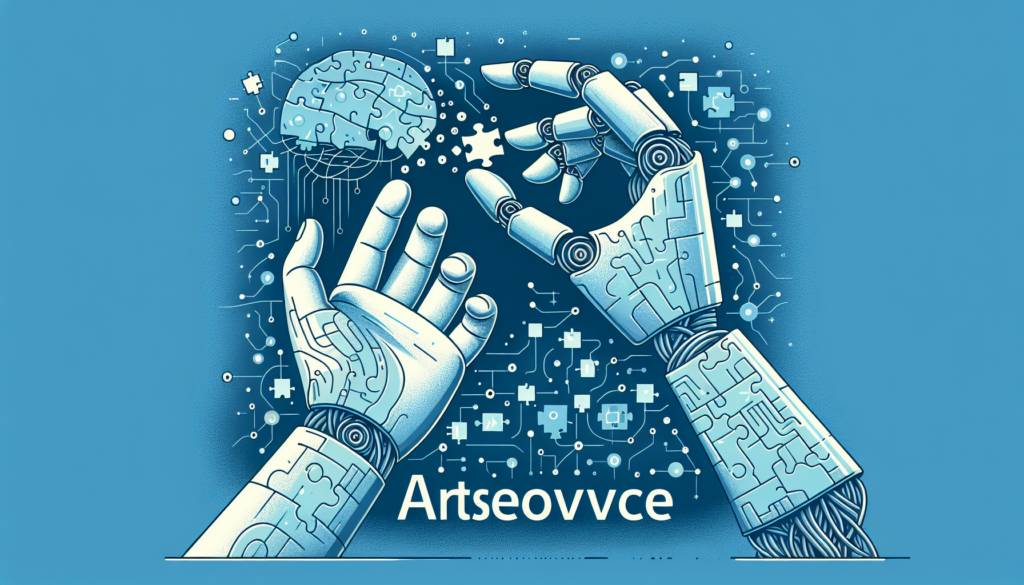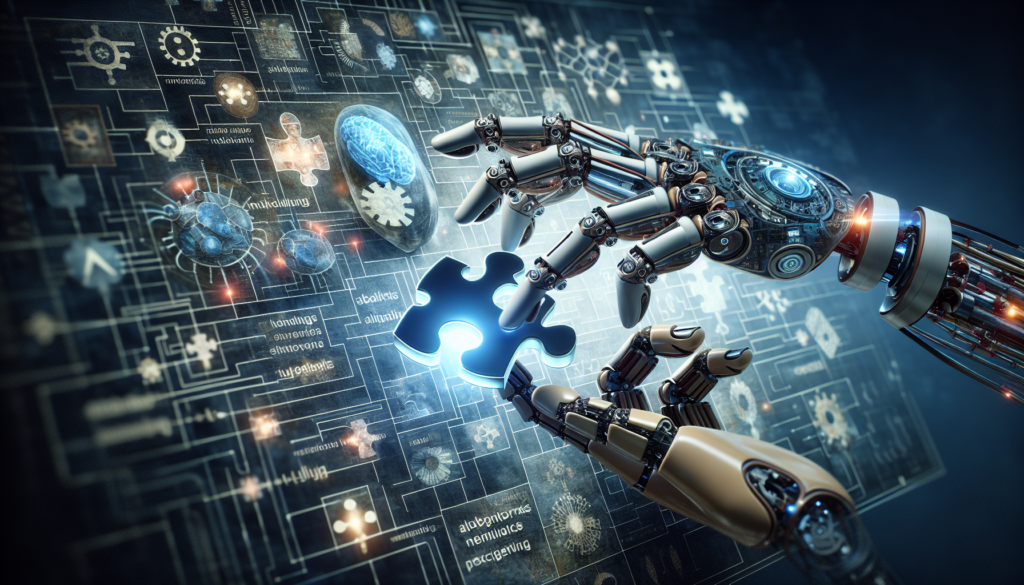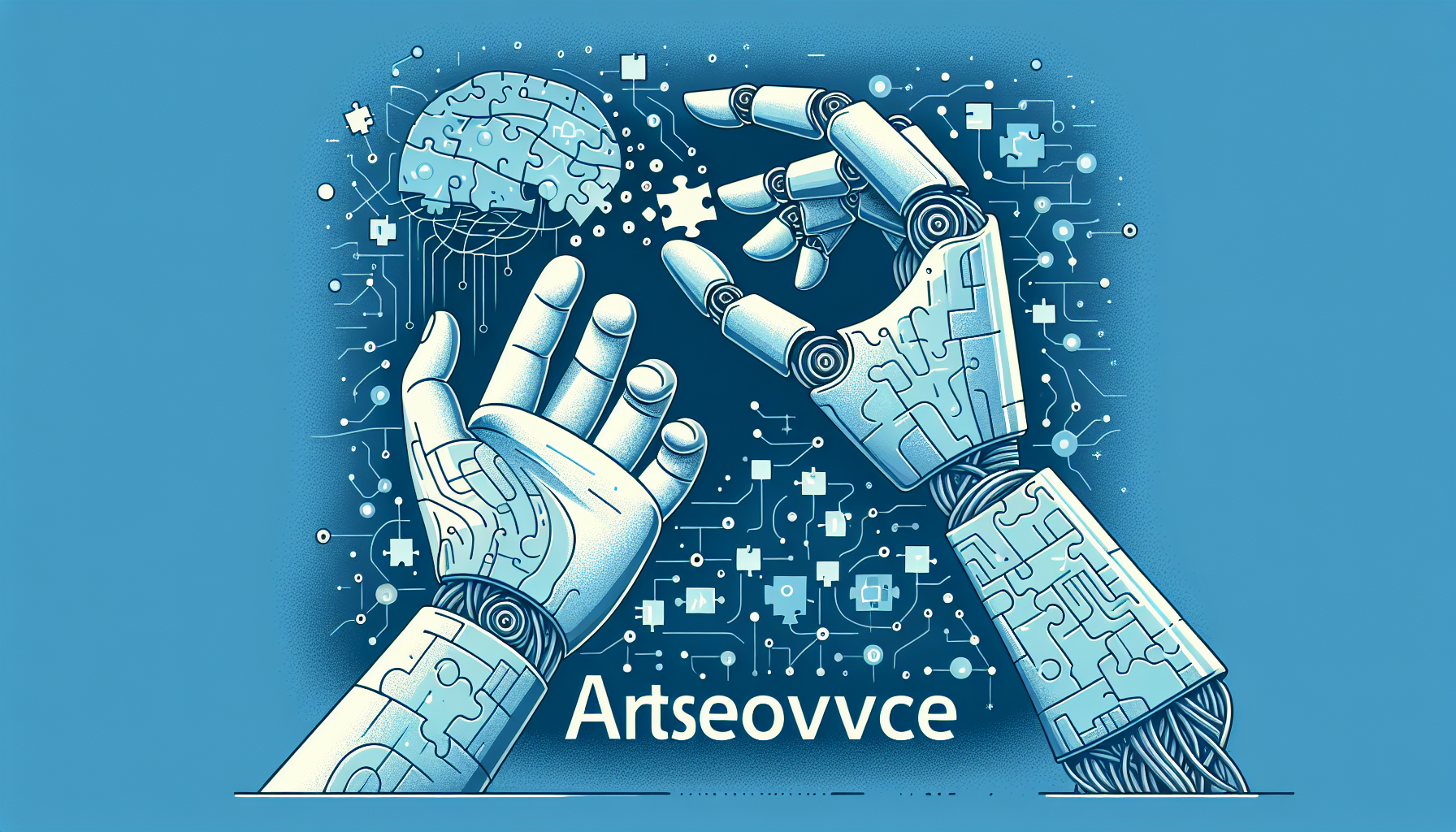Have you ever wondered how Artificial Intelligence (AI) works? It’s a fascinating topic that holds immense potential for the future. In this article, we will take you through the step-by-step process of how AI functions, demystifying the complex algorithms and techniques that power this cutting-edge technology. By understanding the inner workings of AI, you’ll gain a deeper appreciation for its capabilities and the impact it can have on various industries. So, let’s embark on a journey into the realm of AI and uncover the fascinating steps behind its operation.
AI Basics
Definition of AI
AI, which stands for Artificial Intelligence, refers to the ability of a computer system to perform tasks that typically require human intelligence. It is a field of computer science that focuses on developing machines capable of simulating human cognitive processes, such as learning, problem-solving, and decision-making. By analyzing large amounts of data and recognizing patterns, AI systems can make predictions, understand natural language, and even exhibit creativity.
Types of AI
There are different types of AI that exist, each with its own level of complexity and capabilities. The three main types of AI are:
-
Narrow AI: Also known as Weak AI, narrow AI is designed to perform a specific task or set of tasks. It is specialized and focused, and can excel at activities like speech recognition, image recognition, or playing chess. However, narrow AI lacks the ability to perform tasks that fall outside its specific domain.
-
General AI: General AI, also referred to as Strong AI, possesses the ability to understand, learn, and apply knowledge across various domains. It is capable of performing any intellectual task that a human being can do. General AI, although still a theoretical concept, aims to create machines that can exhibit human-like intelligence.
-
Superintelligent AI: Superintelligent AI surpasses human intelligence in virtually every aspect. It has the ability to outperform humans in decision-making, problem-solving, and other cognitive tasks. Superintelligent AI is currently hypothetical and is the subject of much debate and speculation within the field of AI.
Machine Learning
What is Machine Learning?
Machine Learning is a subfield of AI that focuses on the development of algorithms and models that enable computers to learn from data and make predictions or decisions without being explicitly programmed. It involves training a machine learning model on a large dataset and using that model to make predictions or classify new data.
Supervised Learning
Supervised learning is a machine learning technique where a model is trained on a labeled dataset. It involves providing the model with input features and their corresponding correct output labels, allowing it to learn the relationship between the input and output. Once trained, the model can generalize and make predictions on unseen data.
Unsupervised Learning
In contrast to supervised learning, unsupervised learning involves training a model on an unlabeled dataset. The goal is to uncover underlying patterns or structures in the data without any prior knowledge of the output labels. Common unsupervised learning methods include clustering, where similar data points are grouped together, and dimensionality reduction, which aims to compress the data while preserving its meaningful features.
Reinforcement Learning
Reinforcement learning is a type of machine learning that takes inspiration from how humans learn through trial and error. In reinforcement learning, an agent interacts with an environment and performs actions to maximize a reward signal. The agent learns to make decisions by receiving feedback from the environment based on the consequences of its actions. Through continuous exploration and learning, the agent improves its decision-making abilities.

Neural Networks
Introduction to Neural Networks
Neural networks are computational models inspired by the structure and functioning of the human brain. They consist of interconnected nodes called neurons, which process and transmit information. Neural networks are designed to recognize patterns and relationships in data, allowing them to solve complex problems.
Neurons and Activation Functions
Neurons are the fundamental building blocks of neural networks. They receive input signals, perform a mathematical operation on the inputs, and produce an output signal. Each neuron applies an activation function to the weighted sum of its inputs, determining whether it should fire or remain inactive. Common activation functions include sigmoid, ReLU, and tanh.
Layers and Architectures
Neural networks are organized into layers, with each layer consisting of multiple neurons. The input layer receives the initial data, and subsequent hidden layers process and transform the information as it passes through the network. The output layer produces the final result or prediction. The architecture of a neural network refers to its organization and connectivity of these layers. Common architectures include feedforward neural networks, convolutional neural networks (CNNs), and recurrent neural networks (RNNs).
Training the Model
Collecting and Preparing Data
To train a machine learning model, a large and diverse dataset is required. The dataset should accurately represent the problem the model aims to solve. It is crucial to ensure the quality and cleanliness of the data, which involves removing outliers, handling missing values, and normalizing the data if necessary. Data collection and preparation are iterative processes that may require cleaning, merging, and feature engineering.
Model Training
Model training involves optimizing the parameters of the machine learning model to minimize the difference between its predicted outputs and the actual ground truth. This is achieved by feeding the model with the labeled training data and adjusting the model’s internal parameters based on the errors or differences between the predicted and actual values. The training process continues until the model achieves satisfactory performance.
Loss Function and Optimization
A loss function is used to measure how well the model performs on the training data. It quantifies the discrepancy between the predicted and actual outputs. The optimization process aims to minimize this loss function by adjusting the model’s parameters. Optimization algorithms, such as stochastic gradient descent (SGD), are used to update the parameters iteratively based on the gradient of the loss function.
Backpropagation
Backpropagation is a widely-used algorithm for training neural networks. It involves calculating the gradient of the loss function with respect to each parameter in the network and using this information to update the parameters in the opposite direction of the gradient. By iteratively updating the parameters through backpropagation, neural networks can learn from data and improve their predictions.

Deep Learning
Understanding Deep Learning
Deep learning is a subset of machine learning that focuses on training deep neural networks with multiple hidden layers. These networks are capable of learning hierarchical representations of data, enabling them to capture complex relationships and patterns. Deep learning has achieved remarkable success in various domains, including computer vision, natural language processing, and speech recognition.
Deep Neural Networks
Deep neural networks (DNNs) are neural networks with multiple hidden layers between the input and output layers. These hidden layers allow the network to learn increasingly abstract representations of the input data. DNNs excel at tasks that involve complex feature extraction and high-dimensional data, such as image or speech recognition. Recurrent neural networks (RNNs) and convolutional neural networks (CNNs) are examples of deep neural networks.
Convolutional Neural Networks
Convolutional neural networks (CNNs) are a type of deep neural network specifically designed for processing grid-like data, such as images. CNNs leverage convolutional layers, pooling layers, and fully connected layers to extract meaningful features from the input data and classify or detect objects within images. They have revolutionized computer vision tasks, including image recognition, object detection, and image segmentation.
Recurrent Neural Networks
Recurrent neural networks (RNNs) are neural networks that can process sequential data by maintaining hidden states that capture information from previous inputs. RNNs can model dependencies over time, making them suitable for tasks like speech recognition, language translation, and sentiment analysis. Long Short-Term Memory (LSTM) and Gated Recurrent Unit (GRU) are popular variations of RNNs that help mitigate the vanishing gradient problem and improve performance.
Natural Language Processing
Introduction to NLP
Natural Language Processing (NLP) is a branch of AI that focuses on enabling computers to understand, interpret, and generate human language. NLP techniques allow machines to process and analyze text, enabling applications like sentiment analysis, machine translation, and chatbots. NLP faces challenges such as understanding context, disambiguation, and generating coherent and fluent language responses.
Tokenization and Encoding
Tokenization is the process of breaking down text into individual units, called tokens. These tokens can be words, characters, or subwords. Tokenization helps in standardizing the input data and facilitates further processing. Encoding involves representing these tokens numerically to feed them into machine learning models. Techniques like one-hot encoding, word embeddings, and subword embeddings are used to encode textual data.
Text Classification
Text classification is the task of assigning predefined labels or categories to text documents. It is commonly used for sentiment analysis, topic classification, spam detection, and more. Machine learning models, such as support vector machines (SVM), naive Bayes, or deep learning models like recurrent neural networks (RNNs) or transformers, can be trained on labeled text data to perform text classification tasks.
Text Generation
Text generation refers to the process of generating human-like text based on a given prompt or context. It involves training models to understand the patterns and structure of a language and generate coherent and contextually relevant text. Techniques like recurrent neural networks (RNNs), transformers, and language models, such as GPT (Generative Pre-trained Transformer) have been used for text generation.
Text Summarization
Text summarization is the process of condensing a longer piece of text into a shorter, concise summary while preserving its key information. There are two main types of summarization: extractive and abstractive. Extractive summarization involves selecting important sentences or phrases from the original text, while abstractive summarization involves generating new sentences that capture the essence of the original text. Deep learning models, such as transformer-based models, have shown promising results in text summarization.
Computer Vision
Exploring Computer Vision
Computer vision is a field of AI that focuses on enabling computers to understand and interpret visual information, such as images and videos. It involves tasks like image recognition, object detection, image segmentation, and more. Computer vision techniques rely on image processing, pattern recognition, and machine learning algorithms to extract meaningful information from visual data.
Image Recognition
Image recognition, also known as image classification, is the task of assigning predefined labels or categories to images. It involves training machine learning models on labeled image datasets to learn and recognize patterns and features within images. Deep learning approaches, particularly convolutional neural networks (CNNs), have achieved remarkable accuracy in image recognition tasks, surpassing human performance in certain domains.
Object Detection
Object detection is the process of identifying and localizing objects within an image or video. It involves both classification, determining the class or category of the object, and localization, drawing bounding boxes around the objects. Object detection is widely used in applications like autonomous vehicles, surveillance systems, and facial recognition. Techniques like region-based convolutional neural networks (R-CNN), You Only Look Once (YOLO), and Single Shot MultiBox Detector (SSD) have significantly advanced object detection capabilities.
Image Segmentation
Image segmentation is the task of partitioning an image into meaningful segments or regions based on their visual properties. It aims to understand the boundaries and contours of objects within an image. Unlike object detection, which identifies objects at a coarse level, image segmentation provides more precise pixel-level information. Techniques like semantic segmentation, instance segmentation, and panoptic segmentation leverage deep learning models and convolutional neural networks (CNNs) to achieve accurate image segmentation.
Speech Recognition
How Speech Recognition Works
Speech recognition, also known as automatic speech recognition (ASR), is the technology that converts spoken words into written text. It involves the process of analyzing audio signals, extracting features from the speech, and using machine learning algorithms to transcribe the spoken words into text. Speech recognition systems have improved significantly with the advent of deep learning techniques.
Speech Input Processing
Speech input processing involves capturing and digitizing audio signals, which can be achieved using microphones or audio sensors. The audio signals are then preprocessed to remove noise, filter the signal, and enhance the quality of the speech. Techniques like signal processing, Fourier analysis, and windowing are used to prepare the audio signals for further analysis.
Acoustic Modeling
Acoustic modeling is a vital component of speech recognition systems. It involves training a model to learn the relationship between audio features and corresponding phonemes, the smallest units of sound in a language. The model can be trained using supervised learning techniques on large labeled datasets, which contain pairs of audio features and their corresponding phoneme transcriptions.
Language Modeling
Language modeling is another crucial aspect of speech recognition. It involves training a model to predict the probability of a sequence of words or phrases given the previously spoken words. Language models can be trained using large text corpora collected from various sources. These models capture language patterns, grammar, and contextual information, which are combined with the acoustic model to improve the accuracy of speech recognition.
Decision Making
Making Decisions with AI
Decision making is a fundamental aspect of AI systems. AI can be used to model decision-making processes, simulate possible scenarios, and optimize actions based on desired outcomes. By analyzing data, AI systems can make informed decisions in various domains, such as finance, healthcare, and game theory.
Game Theory
Game theory is a branch of mathematics that deals with decision-making in interactive environments. It involves studying the strategic interactions between multiple players and understanding the choices they make based on their objectives and the actions of others. AI techniques, such as reinforcement learning, can be used to model and optimize decision-making in games, economics, and negotiations.
Markov Decision Process
Markov Decision Process (MDP) is a mathematical framework used to model sequential decision-making problems. It involves defining a set of states, actions, and rewards, along with the probabilities of transitioning between states based on the chosen actions. By formulating decision problems as MDPs, AI algorithms, like reinforcement learning, can learn to make optimal decisions by maximizing the long-term expected rewards.
Reinforcement Learning for Decision Making
Reinforcement learning can be used to model decision-making processes in dynamic and uncertain environments. By training an agent to interact with an environment and using reinforcement signals, the agent can learn to take actions that maximize its expected cumulative rewards. Reinforcement learning techniques, like Q-learning and deep Q-networks (DQNs), have been successfully applied in various decision-making scenarios, such as robotics, logistics, and finance.
AI Applications
Self-driving Cars
Self-driving cars are a prominent example of AI applied to transportation. Through the use of sensors, cameras, and machine learning algorithms, self-driving cars can perceive and interpret their surroundings, make informed decisions, and navigate autonomously. AI techniques, such as computer vision, deep learning, and decision-making algorithms, play a crucial role in enabling self-driving cars to understand the environment, detect obstacles, and make safe driving decisions.
Virtual Assistants
Virtual assistants, such as Siri, Alexa, and Google Assistant, are AI applications that use natural language processing and machine learning techniques to understand and respond to user queries or commands. These assistants leverage speech recognition, language modeling, and decision-making algorithms to provide personalized assistance, perform tasks like setting reminders, answering questions, and controlling smart devices.
Healthcare
AI is increasingly being used in the healthcare industry to improve diagnoses, treatment planning, and patient outcomes. Machine learning algorithms can analyze medical data, such as patient records, medical images, and genomic data, to identify patterns and make predictions. AI can assist in early disease detection, drug discovery, personalized medicine, and clinical decision support systems, ultimately leading to improved healthcare delivery and patient care.
Financial Analysis
AI has revolutionized the field of financial analysis by enabling data-driven decision-making and predicting market trends. Machine learning algorithms can analyze financial data, such as stock prices, market trends, and economic indicators, to make predictions and assist in investment strategies. AI can automate tasks like fraud detection, risk assessment, algorithmic trading, and credit scoring, improving accuracy and efficiency in financial analysis.
In conclusion, AI has become an integral part of various aspects of our lives, from natural language processing to computer vision and decision-making. Through machine learning, neural networks, and deep learning, AI systems can process and make sense of vast amounts of data, perform complex tasks, and assist in decision-making processes. With ongoing advancements and innovations, AI is poised to play a significant role in shaping the future of technology and society.
